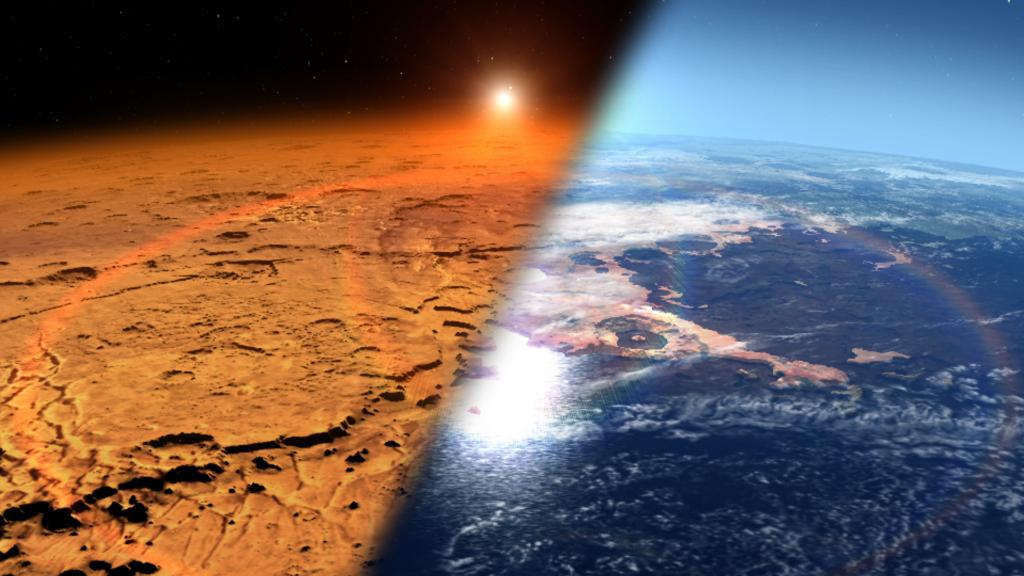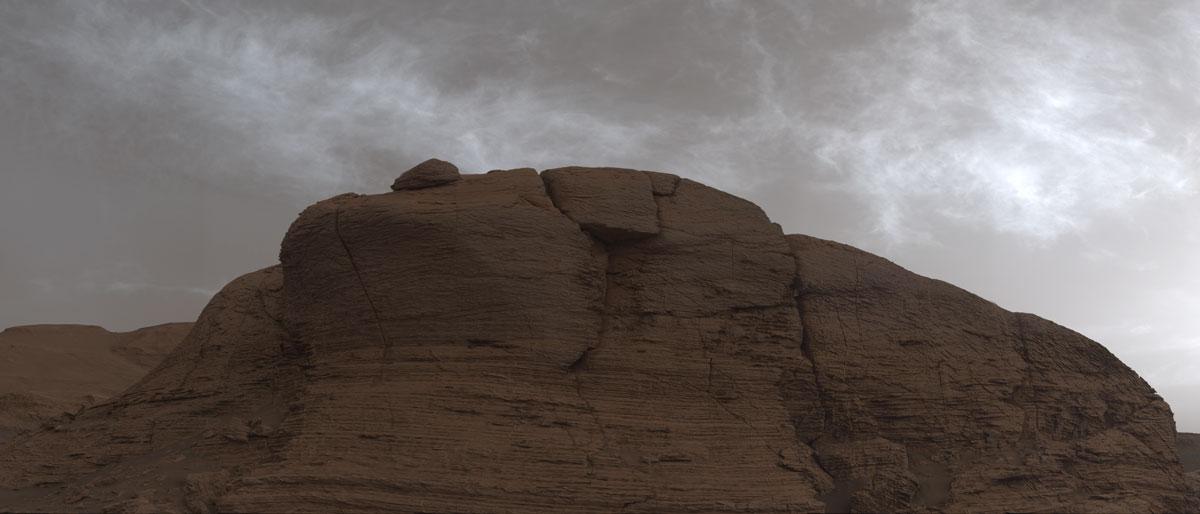Scientists from NASA have organized a project called Cloudspotting on Mars. Within its framework, anyone will be able to participate in the identification of Martian clouds through the Zooniverse platform. The aim of the project is to find an answer to the question of the reasons for the loss of the Red Planet of most of its atmosphere.
Lost atmosphere of the Red Planet
Mars has a very thin atmosphere these days. The atmospheric pressure at the surface of the planet is two orders of magnitude less than the pressure at the surface of the Earth. It is so small that the boiling point on Mars is close to zero degrees Celsius. Now any water will instantly evaporate from the surface of the planet.

But this was not always the case. Spacecraft have collected a lot of data indicating that in the distant past Mars had a much denser atmosphere that supported the existence of liquid water near its surface. Rivers flowed on the surface of the planet, it possessed lakes and seas.
Scientists have several theories explaining Mars’ loss of its gas envelope. As a rule, they feature the Sun, whose radiation breaks up H2O molecules in the upper layers of the planet’s atmosphere into oxygen and hydrogen. The last then escapes into space.
Finding Martian Clouds
However, in order to confirm this theory, scientists need to understand the structure of the Martian atmosphere. Clouds can help them in this. There are two types of clouds on Mars. The first consists of water vapor, the second — of crystals of dry ice. Understanding where and how different clouds form will help researchers study how the atmosphere of the Red Planet functions and how high water vapor can rise.

That’s where the volunteers will come to the rescue. As part of the Cloudspotting on Mars project, they will study the archive of data collected by the MCS spectrometer installed on board the MRO probe. For 16 years, it studied the Martian atmosphere in the infrared range. In its data, clouds look like arches. Scientists experimented with computer algorithms to determine them, but eventually came to the conclusion that so far the human eye will cope better with this task (however, volunteers can also help improve algorithms). To participate in the project, just click on the following link.
This is not the first time that NASA has asked for the help of astroenthusiasts. Recently, the aerospace administration invited everyone to look for vortices on Jupiter.
According to https://www.nasa.gov
Follow us on Twitter to get the most interesting space news in time
https://twitter.com/ust_magazine
